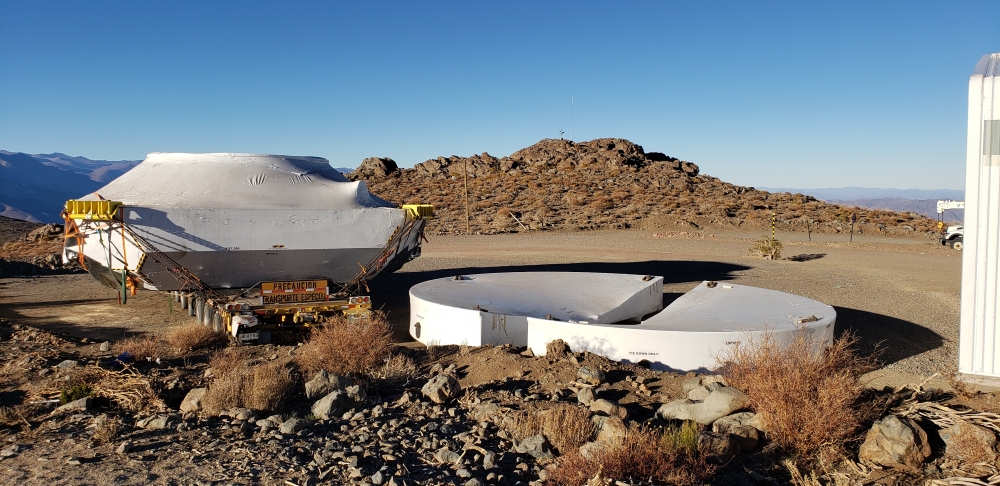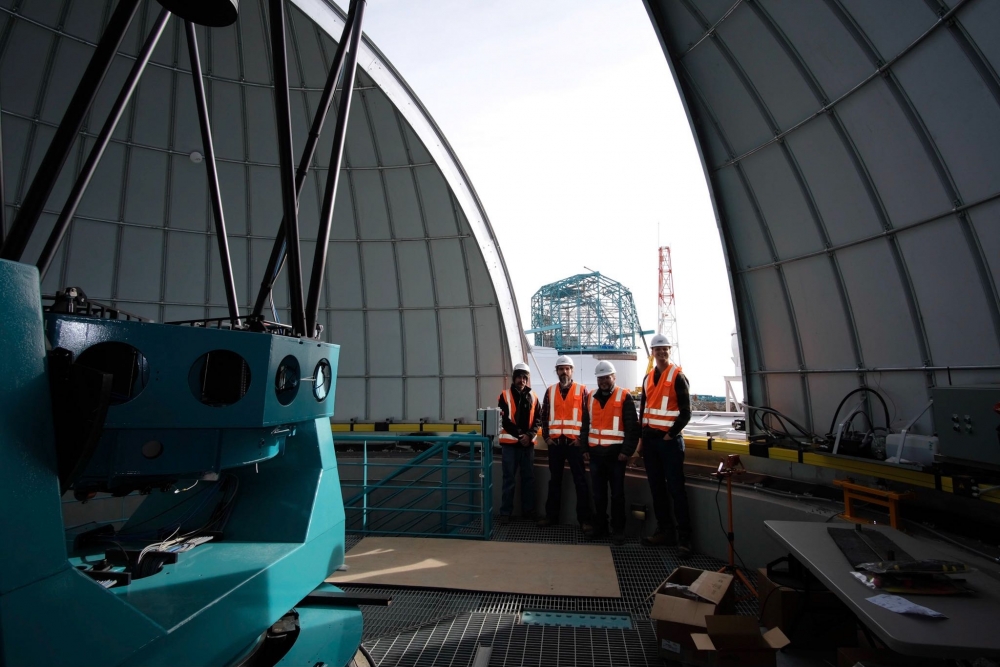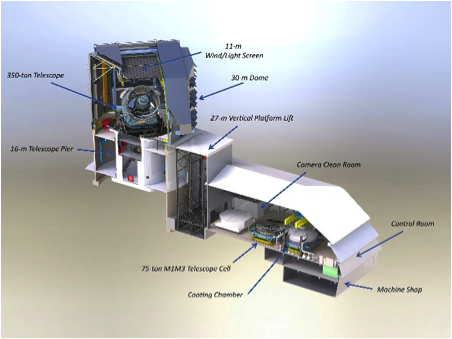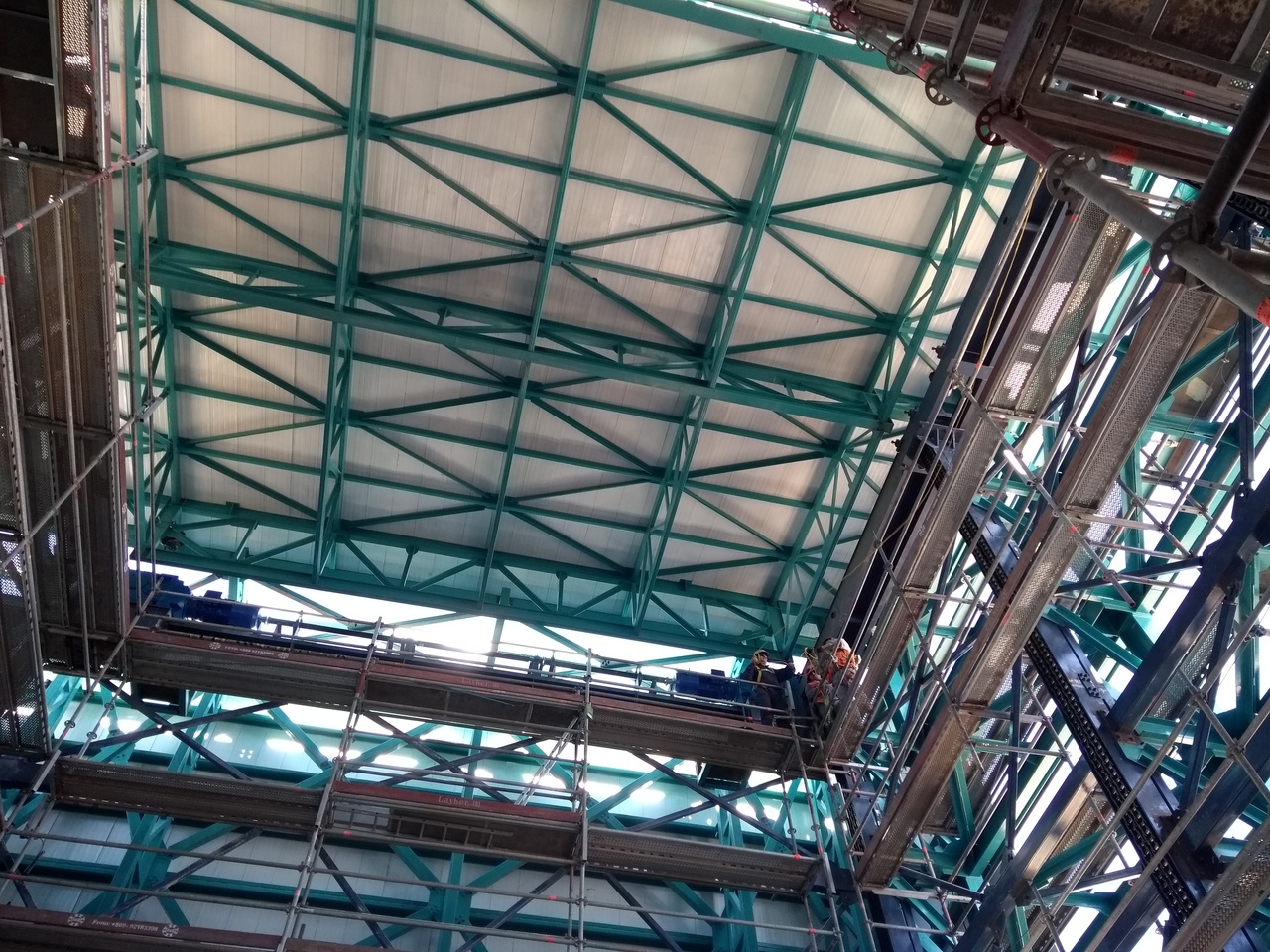We are aware of the proposal by the United States House Science Committee to rename LSST the Vera Rubin Survey Telescope. Dr. Vera C. Rubin made significant contributions to astronomy and the advancement of women in science, and we appreciate the Committee’s recognition of her work. AURA, which has a cooperative agreement with the National Science Foundation to construct and operate LSST, is continuing its ongoing dialog with the agency regarding formal designations for the facility which include any direction from Congress.
Just a few days remain to take advantage of early registration pricing for LSST 2019, which ends June 30th. Click here for a link to registration and to view the first draft of the meeting agenda.
The LSST Commissioning Camera (ComCam) arrived at the LSST Project Office in Tucson on June 20th, after being shipped from SLAC National Accelerator Laboratory, where it was constructed. ComCam is a small, one raft version of the full LSST Camera that will be used for testing and early commissioning of the camera, telescope, site infrastructure, and data management systems. In Tucson, ComCam will have additional optical components installed and undergo testing before being shipped to Chile later this year. Read more about ComCam in this recent Symmetry article.
The Secondary Mirror (M2) Coating Readiness Review took place in Chile on June 18-19. The purpose of the review was to assess the overall process for coating the M2 mirror, and to ensure the readiness of the planned work, procedures and equipment. Based on the successful outcome of this review, the M2 coating campaign has been scheduled for July and will be performed by LSST personnel with onsite assistance from Von Ardenne, the coating plant vendor.
The LSST Data Management Leadership Team (DMLT) gathered for a face-to-face meeting at the National Center for Supercomputing Applications (NCSA) in Illinois, June 3-6. Topics discussed by the team included preparation for upcoming reviews, status updates and planning for middleware development, release process & policies, and outcomes from the recent Science Platform Final Design Review. Photos from the event are available in the LSST Gallery.
The LSST Community Broker Workshop took place in Seattle, WA, on June 19-21. This workshop brought together LSST Project personnel, representatives of the LSST Science Collaborations, and proposers of community brokers in order to open lines of communication between the different groups. As a follow-up, the workshop’s Scientific Organizing Committee will lead the production of a white paper to capture ideas and proposed directions forward for building a global ecosystem of brokers, science platforms, and target and observation managers (TOMs) for transient science with the LSST alert stream.
LSST CORPORATION NEWS
Applications are now being accepted to attend the workshop, “Managing Follow-up Observations in the Era of ZTF and LSST,” Sept. 30th-Oct. 4th at Carnegie Observatories in Pasadena, CA. The workshop will be an interactive introduction to the key technologies and facilities for follow-up observing that will drive astronomy in the LSST era, and a chance for scientists to influence their development. More information and a link to the application can be found here. Applications must be received by July 15th for full consideration. Travel support will be provided for those from LSST Corporation member institutions.
INFORMATION FOR PROJECT MEMBERS
LSST has been featured in the news a lot recently and journalists have been getting in touch with project members. This is a reminder that if you are contacted by members of the media, the LSST Communications Office is available to guide you (communications-team@lists.lsst.org). Please also refer to the LSST Project Media Interactions Policy as a resource.
PERSONNEL NEWS
Isidro Ocaranza joined the Telescope & Site subsystem as Summit Janitor on June 10th. In this role, Isidro will be responsible for maintaining cleanliness of the LSST summit facility.
UPCOMING MEETINGS with LSST INVOLVEMENT
(those with asterisk* are LSSTC funded):
2019 | |
July 15-19 | LSST Dark Energy Science Collaboration (DESC) meeting, APC, Paris, France |
August 5-7 | LSST Dark Matter Workshop 2019, Chicago, IL* |
August 6-9 | Joint Directors Review, SLAC, Menlo Park, CA |
August 12-16 | LSST 2019 Project and Community Workshop, Tucson, AZ |
August 19-28 | La Serena School for Data Science: Applied Tools for Data-driven Sciences, La Serena, Chile* |
August 27-30 | NSF/DOE Joint Status Review, Tucson, AZ |
September 11-13 | AMCL meeting, La Serena, Chile |
September 30-October 4 | Managing Follow-up Observations in the Era of ZTF and LSST Workshop, Pasadena, CA* |
October 22-24 | Kavli From Petabytes to Science Workshop, Boston, MA |
NOTICIAS DEL PROYECTO & DE LA CIENCIA
Estamos en conocimiento de la propuesta del Comité Científico de la Cámara de los Estados Unidos de cambiar el nombre de LSST por el Telescopio de Investigación Vera Rubin. La Dra. Vera C. Rubin hizo importantes contribuciones a la astronomía y al avance de las mujeres en la ciencia, y apreciamos el reconocimiento de su trabajo por el Comité. AURA, que tiene un acuerdo cooperativo con la Fundación Nacional de Ciencia para construir y operar LSST, continúa su diálogo con la agencia con respecto a las designaciones formales para la instalación que incluyen dirección del Congreso.
Solo quedan unos días para aprovechar los precios de inscripción temprana para LSST 2019, que finaliza el 30 de junio. Haga clic aquí here para obtener un enlace para registrarse y para ver el primer borrador de la agenda de la reunión.
La Cámara de Puesta en Servicio de LSST (ComCam) llegó a la Oficina del Proyecto LSST en Tucson el 20 de junio, después de haber sido enviada desde el Laboratorio Nacional de Aceleradores SLAC, donde se construyó. ComCam es una versión pequeña de un módulo de la cámara completa de LSST que se usará para probar y poner la cámara, el telescopio, la infraestructura del sitio y los sistemas de gestión de datos en servicio. En Tucson, se le instalaran componentes ópticos adicionales a la ComCam y se someterá a pruebas antes de enviarse a Chile a finales de este año. Lea más sobre ComCam en este reciente artículo article de Symmetry.
La Revisión de la Preparación del Recubrimiento del Espejo Secundario (M2) se llevó a cabo en Chile del 18 al 19 de junio. El propósito de la revisión fue evaluar el proceso general para recubrir el espejo M2 y asegurar la preparación del trabajo planificado, los procedimientos y equipamiento. En base del exitoso resultado de esta revisión, la campaña del recubrimiento del M2 se programó para julio y será realizado por personal de LSST con la asistencia in situ de Von Ardenne, el vendedor de la planta de recubrimiento.
El Equipo de Liderazgo de Gestión de Datos de LSST (DMLT) se juntó en una reunión cara a cara en el Centro Nacional para Aplicaciones de Supercomputación (NCSA) en Illinois, del 3 al 6 de junio. Los temas discutidos por el equipo incluyeron la preparación para las próximas revisiones, actualizaciones de estado y la planificación para el desarrollo de middleware, las políticas & procesos de lanzamiento y, los resultados de la reciente Revisión de Diseño Final de la Plataforma Científica. Las fotos del evento están disponibles en la Galería de LSST LSST Gallery.
El Taller de Intermediarios Comunitarios de LSST se llevó a cabo en Seattle, WA, del 19 al 21 de junio. Este taller reunió al personal del Proyecto LSST, representantes de las Colaboraciones Científicas de LSST y proponentes de intermediarios comunitarios para abrir las líneas de comunicación entre los diferentes grupos. Como seguimiento, el Comité Científico Organizador del taller dirigirá la producción de un informe para capturar ideas y las direcciones propuestas para construir un ecosistema global de intermediarios, plataformas científicas y gerentes de objetivos y observación (TOMs) para la ciencia transitoria con la secuencia de alertas de LSST.
NOTICIAS DE LA CORPORACION LSST
Se están aceptando solicitudes para asistir al taller, "Gestión de las Observaciones de Seguimiento en la Era de ZTF y LSST", del 30 de septiembre al 4 de octubre en los observatorios Carnegie en Pasadena, CA. El taller será una introducción interactiva a las tecnologías e instalaciones claves para la observación de seguimiento que impulsará la astronomía en la era de LSST, y una oportunidad para que los científicos influyan en su desarrollo. Más información y un enlace de la postulación se pueden encontrar aquí here. Las postulaciones deben ser recibidas antes del 15 de julio para ser consideradas. Se proporcionará asistencia de viaje para los miembros de las instituciones miembros de la Corporación LSST.
INFORMACIÓN PARA LOS MIEMBROS DEL PROYECTO
LSST ha aparecido en las noticias recientemente y los periodistas se han puesto en contacto con los miembros del proyecto. Este es un recordatorio de que, si es contactado por miembros de los medios de comunicación, la Oficina de Comunicaciones de LSST está disponible para guiarlo (communications-team@lists.lsst.org). Consulte también la Política de Interacciones de Medios del Proyecto LSST como recurso.
NOTICIAS DEL PERSONAL
Isidro Ocaranza se unió al subsistema de Telescopio & Sitio como Summit Janitor el 10 de junio. En esta función, Isidro será responsable de mantener la limpieza de las instalaciones del sitio de LSST.
PRÓXIMAS REUNIONES CON PARTICIPACION DE LSST
(aquellas con asterisco * son financiadas por LSSTC):
2019 | |
Junio 19-21 | LSST Community Broker Workshop (por invitación), Seattle, WA |
Julio 15-19 | Reunión Dark Energy Science Collaboration (DESC) LSST, APC, París, Francia |
Agosto 5-7 | LSST Dark Matter Workshop 2019, Chicago, IL * |
Agosto 6-9 | Revisión en Conjunto de Directores, SLAC, Menlo Park, CA |
Agosto 12-16 | Taller del Proyecto y Comunitario LSST 2019 , Tucson, AZ |
Agosto 19-28 | La Serena School for Data Science: Herramientas Aplicadas para la Ciencia Basada en Datos, La Serena, Chile |
Agosto 27-30 | Revisión de Estado Conjunta de la NSF/DOE, Tucson, AZ |
Septiembre 11-13 | Reunión AMCL, La Serena, Chile |
Septiembre 30-Octubre 4 | Taller Managing Follow-up Observations in the Era of ZTF and LSST , Pasadena, CA* |
Octubre 22-24 | Taller Kavli From Petabytes to Science, Boston, MA |








